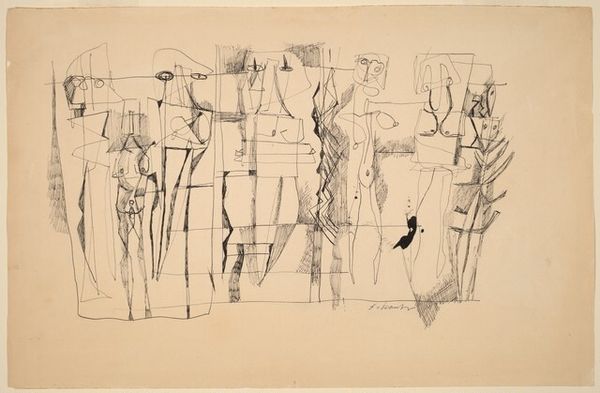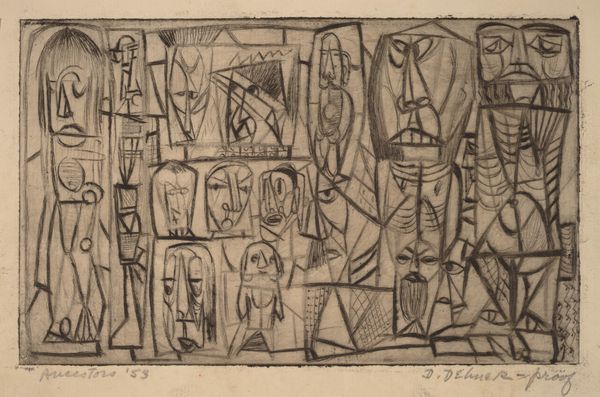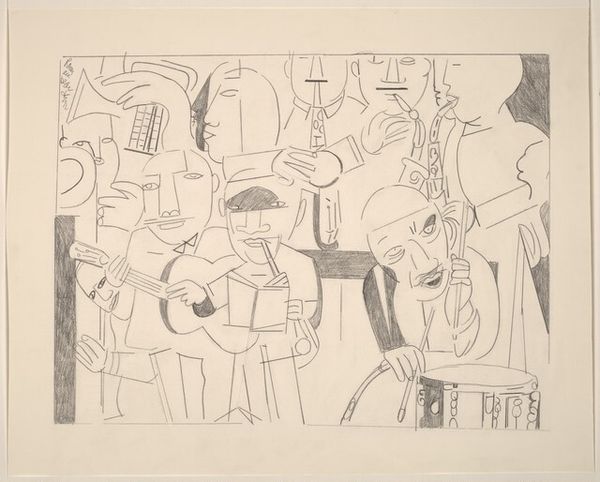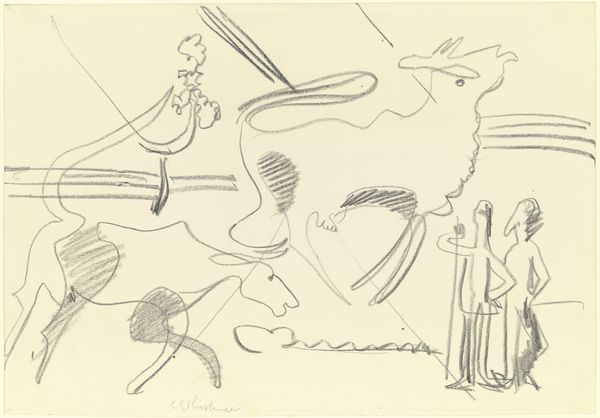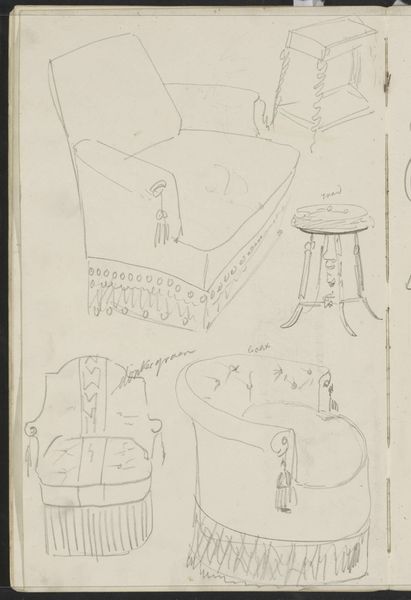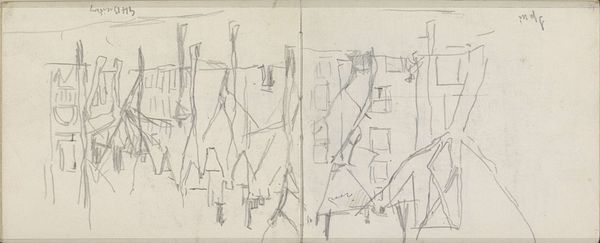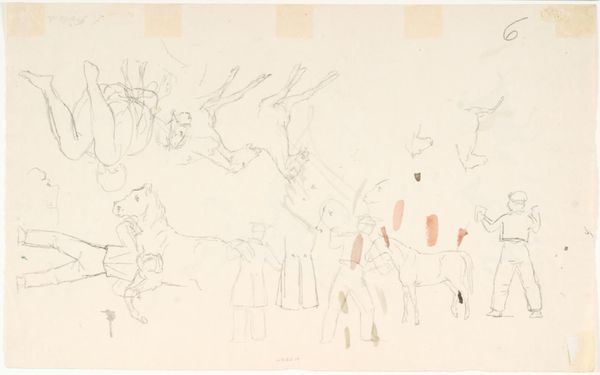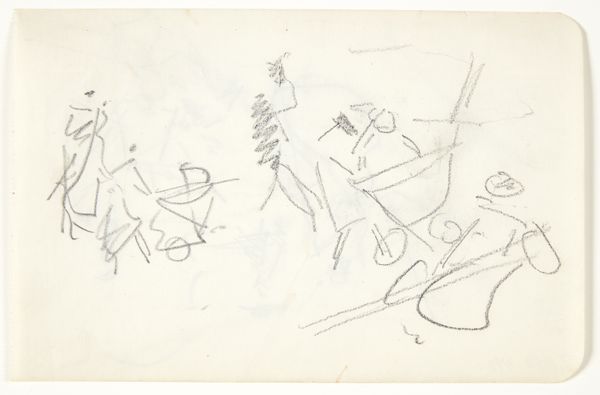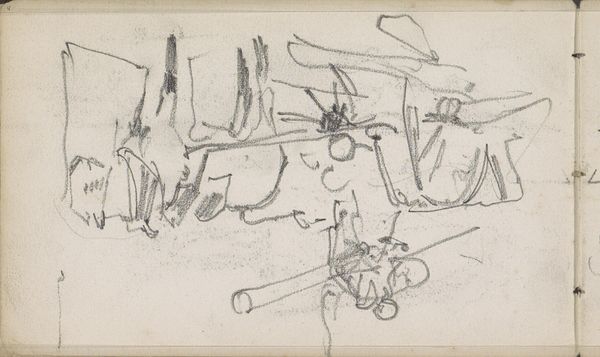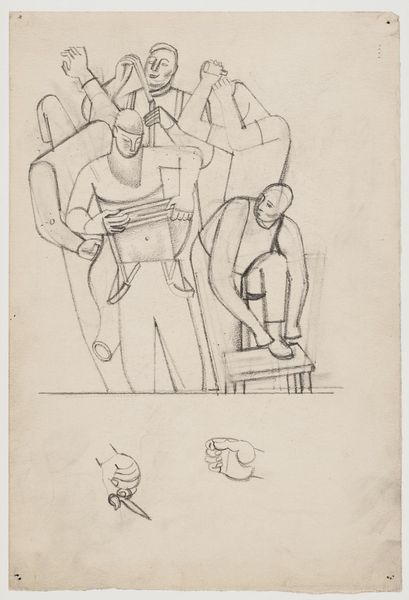
drawing, paper, ink
#
drawing
#
paper
#
abstract
#
ink
#
geometric
#
expressionism
#
modernism
Copyright: Public Domain: Artvee
Editor: This is Paul Klee’s "Komödie" from 1921, an ink drawing on paper. There's a curious playfulness to the arrangement of abstract shapes. It almost looks like a stage set. How would you interpret Klee's approach here? Curator: For me, this piece reveals a deliberate engagement with the material conditions of art production. Klee's choice of humble materials like ink and paper is significant. It democratizes artmaking. Think about the labor involved in the act of drawing itself: the repetitive movements, the delicate control. It's not just about depicting an image; it's about the physical process. Editor: So you see the materials themselves as a central part of the artwork's meaning, and less about, say, expressionism? Curator: Absolutely. Expressionism is a valid lens, but let's look at the cultural context. Post-World War I Germany was grappling with resource scarcity. The accessibility of drawing materials—compared to, say, oil paints and canvas—made artmaking more available, right? The drawing medium flattens the hierarchy between fine art and craft; that leveling is further echoed by the assembly-line nature of the Bauhaus, which promoted industrial techniques. So how can that be reflected in these drawings? Editor: Interesting. The geometric figures could mirror these types of industrial, repetitive processes. I guess I was too focused on the theater aspect of "Komödie" without really considering *how* it was made. Curator: Precisely! What's fascinating is how Klee elevates these everyday materials. This reminds me how the social status of materials and making are themselves culturally constructed! Editor: It completely reframes how I see Klee's work, moving beyond simply interpreting the imagery. Curator: Indeed. By emphasizing the materials and method, Klee prompts us to reevaluate our very understanding of what constitutes “art”.
Comments
No comments
Be the first to comment and join the conversation on the ultimate creative platform.
